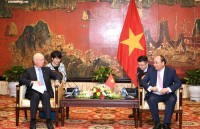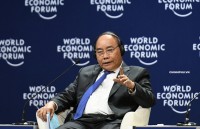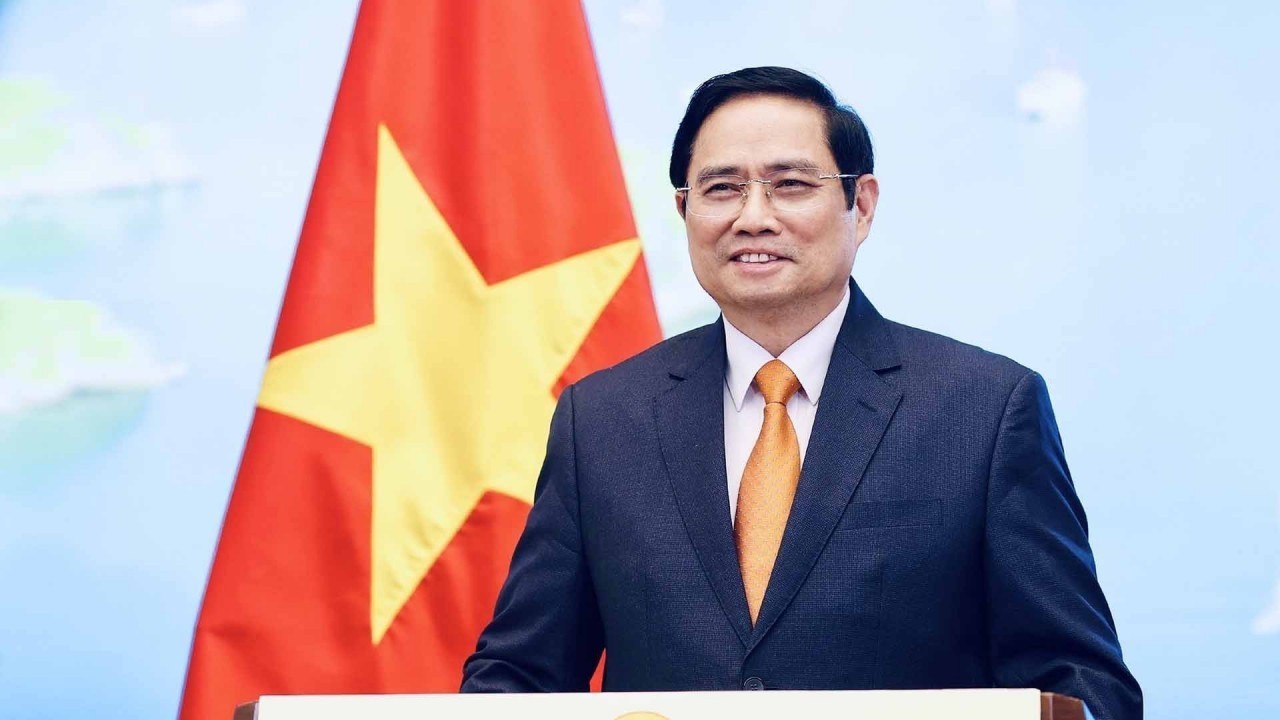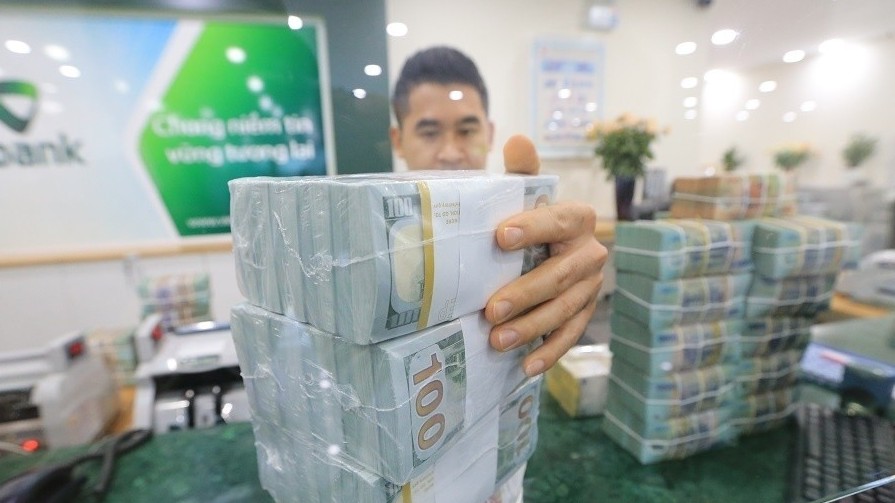
A way forward for ASEAN
Latest
| TIN LIÊN QUAN | |
| WEF ASEAN 2018 opens in Hanoi | |
| WEF ASEAN among Vietnam’s largest diplomatic events in 2018: Deputy FM | |
This paper focuses on the impact of the Fourth Industrial Revolution on the Association of Southeast Asian Nations (ASEAN), thus, coupled with many opportunities are countless challenges, this paper concludes with some concrete suggestions for how ASEAN leaders could rethink their approach to regional interaction under the ASEAN Secretariat.
The Fourth Industrial Revolution and ASEAN
Over the past 50 years, ASEAN has notched up many notable achievements. But the era of the Fourth Industrial Revolution is changing the landscape in significant ways. It is increasingly apparent that the ASEAN organization should consider a new approach to regional policy and governance. The current model, loosely described as “the ASEAN Way”, has proven itself to be highly effective. The core principles of this approach to regional relations must remain. But, alongside the ASEAN Way, the region needs a new operating system.
 |
| Illustrative image. (Photo: igsmag.com) |
The paper discusses at length the impact of the Fourth Industrial Revolution on ASEAN. It will bring huge benefits, equally, it will bring tremendous challenges. That also explains why ASEAN must adopt a regional approach to navigating the Fourth Industrial Revolution. Yes, national-level policies are critical, and ASEAN nations are pursuing these diligently, such as Thailand 4.0 and Singapore’s Smart Nation initiative. But the technologies of the Fourth Industrial Revolution do not recognize national borders. If ASEAN leaders do not think regionally, they will miss out on opportunities and fail to address growing challenges.
The Fourth Industrial Revolution also calls for a new way of formulating policy and regulation. The speed of change under the revolution is accelerating, and the old ways of crafting policy, especially cross-border policy, are too slow, too backward-looking and too rigid. Instead, governance and regulation need to become more agile, faster, more iterative and experimental.
ASEAN Secretariat to become a “platform organization”
The Fourth Industrial Revolution, demands a new approach to organizing regional integration efforts. One important idea is for the ASEAN Secretariat to consider becoming more of a “platform organization”. This means creating an ecosystem upon which multistakeholder groups of experts do the heavy lifting of integration, with the Secretariat acting as the convener and governor of their activities.
In the context of ASEAN, the Secretariat would design and run the “operating system for regional integration”. Third parties – multistakeholder groups of experts – would do the work of designing and formulating new standards, policies and regulations for integration. The role of the Secretariat would be to ensure that all the various integration projects running on its “operating system” were well governed and were conducted in the right manner.
In many senses, the ASEAN Secretariat already functions as a platform organization. But the idea would be to formalize and upgrade the operating system so that the “app developers” (the multistakeholder groups working on integration projects) could function more effectively. For the Secretariat, this would mean a shift in how it works. On the one hand, it would play a stronger role in running the “operating system for regional integration”, through things such as convening and governing working groups. On the other hand, it would play a reduced role in producing the actual content of integration (the suggestions for new standards and regulations), which would be produced by the working groups.
Ideas for developing new “apps” or integration projects would need to be endorsed by the ASEAN member states. But, once endorsed, a working group would be convened on the platform to do the work of crafting the regulations. The ASEAN Secretariat would oversee the formation of the working group and ensure that the group followed agreed processes for developing regulations.
This platform model is not intended in any way to undermine the sovereignty of ASEAN nations. Any proposals for new regulations or standards would still need to be ratified at a national level before they became law.
Delegate key activities to affiliated functional bodies
Extending the idea of ASEAN as a platform organization, the Secretariat could also consider delegating more functions to affiliated third-party groups. These groups or institutions would operate on the platform in a more independent fashion. This would allow ASEAN to maintain oversight while also benefiting from a larger ecosystem of institutions, which will be critical in managing the sheer scale of engagement and implementation that will be required. One notable example is the ASEAN Macroeconomic Research Office (AMRO), which is responsible for managing the region’s financial safety net under the Chiang Mai Initiative Multilateralization.
Shift from long-term blueprints to rolling three-year plans
At present, ASEAN invests considerable effort in developing a strong long-term vision for regional integration with documents such as the ASEAN Economic Community Blueprint 2025. Arguably, however, because the Fourth Industrial Revolution is characterized by rapid, non-linear change, plans such as these quickly become outdated.
Under the Fourth Industrial Revolution it is advisable not to attempt to forecast the future because most forecasts are likely to be wrong. Rather, it is important to be agile and allow for course correction. ASEAN could, therefore, consider supporting its overarching goals with rolling three-year strategies that are revisited and revised frequently.
Ask the people: Democratize and decentralize
If ASEAN is truly to benefit from the widespread expertise in its societies, it should consider increasing its openness to their direct engagement in policy creation. The founding vision of ASEAN was to create an organization that is owned by the people of ASEAN and run for their benefit. The Fourth Industrial Revolution could help this vision to become reality. As internet and smartphone penetration deepens across ASEAN, there is substantial opportunity to make ASEAN policy formulation more inclusive. Dedicated portals could be established to gain direct feedback from ASEAN citizens and experts and to crowdsource ideas.
Multi-country test beds
A pan-ASEAN platform could be established that would nurture multi-country regulatory experiments and crossborder innovation hubs. An initiative of this kind was set up in Europe in March 2017, called the European Platform of National Initiatives (EPNI). The goal of EPNI is to help European industries respond and stay abreast of the Fourth Industrial Revolution by linking national initiatives to create multi-country test beds and “sandboxes”, where regulations can be tested in different regulatory contexts to help a rapid roll-out across the wider European Union.
A new staffing model for the Secretariat
Running the “operating system” for regional integration would require the ASEAN Secretariat to think in new ways. The key to success is operational or execution excellence. In particular, the Secretariat would need to hire staff capable of running a platform model effectively, and who are well versed in managing the new tools of the Fourth Industrial Revolution, such as new systems of communication, new mechanisms for virtual collaboration, and new tools for gathering feedback and ideas.
Alongside a shift in skills, ASEAN leaders could consider a new approach to the recruitment of staff, with workers hired for their skills on a permanent basis, rather than through “appointment”, based on rotation among ASEAN nations. In a similar development, the Secretariat could consider appointing a permanent “CEO” type of leader, hired for his or her experience in crafting regulation and policy, and with a strong record of execution.
A new funding model for the Secretariat
To recruit the right staff, in the right number, and to build the right systems to drive integration, the ASEAN Secretariat will need more funding. The current funding level of roughly $20 million a year is not enough. ADB estimates that, by 2030, the ASEAN Secretariat will need an annual budget of $220 million to manage the ASEAN Community effectively. One possible model might be that used by the United Nations, with contributions linked to the economic size of countries.
 | WEF ASEAN 2018 - the most successful regional meeting of WEF: Klaus Schwab The World Economic Forum (WEF) on ASEAN 2018 (WEF ASEAN 2018) in Vietnam is the most successful regional meeting of the WEF, stated WEF Founder ... |
 | Industry 4.0 brings about opportunities for Mekong integration: PM The fourth Industrial Revolution has created great opportunities for promoting the integration of Mekong countries, with the rising important role of soft and digital connectivity ... |
 | PM Nguyen Xuan Phuc receives WEF Executive Chairman On September 12, Prime Minister Nguyen Xuan Phuc met with the Founder and Executive Chairman of the World Economic Forum (WEF), Klaus Schwab, who is ... |

























